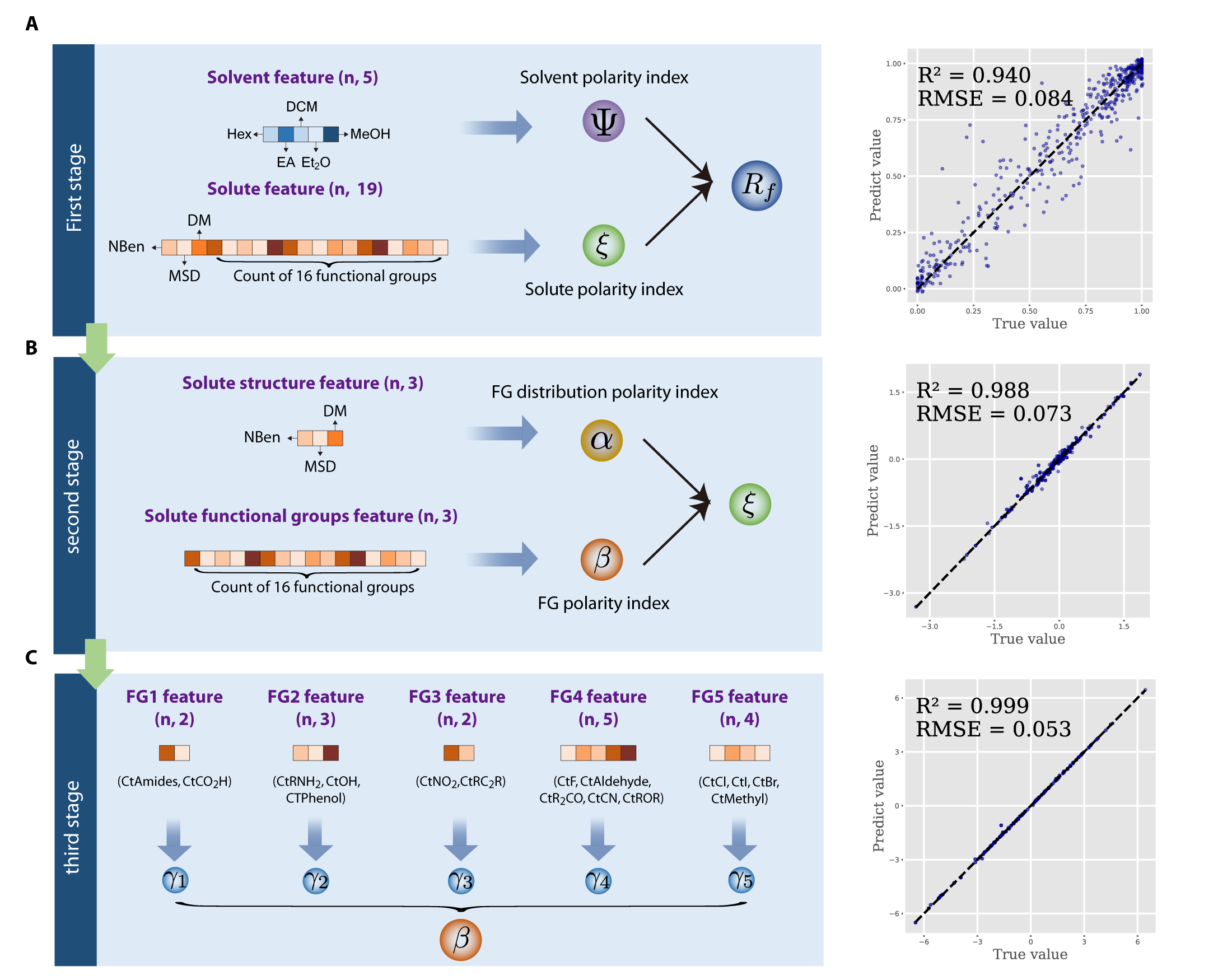- The paper introduces the Unsupervised Hierarchical Symbolic Regression (UHiSR) framework to extract interpretable molecular polarity indices from TLC data.
- It employs a three-stage process—feature clustering, neural extraction, and symbolic regression—to model latent variables Ψ and ξ governing chromatographic behavior.
- Empirical results yield an explicit formula, Rf = σ(3.48Ψ + 3.08ξ + 1.86), demonstrating precise predictive capability in chemical analysis.
Empowering Machines to Think Like Chemists: Implications and Framework
Introduction
The paper "Empowering Machines to Think Like Chemists: Unveiling Molecular Structure-Polarity Relationships with Hierarchical Symbolic Regression" presents the Unsupervised Hierarchical Symbolic Regression (UHiSR) framework, a novel approach that integrates hierarchical neural networks and symbolic regression for molecular polarity analysis, particularly focusing on Thin-Layer Chromatography (TLC) experiments. This work addresses the interpretability-expressiveness trade-off inherent in current AI-driven models used for predicting molecular polarity, which often suffer from the "black box" dilemma.

Figure 1: Overview of Unsupervised Hierarchical Symbolic Regression (UHiSR).
Framework Architecture
UHiSR is structured to mimic the chemists' cognitive process when analyzing molecular structures. It consists of three stages: feature clustering, hierarchical neural network extraction, and symbolic regression. The hierarchical neural network extracts latent representations of polarity indices, which are then used in symbolic regression to derive explicit equations linking molecular structures to chromatographic outcomes.
Key Results
The framework introduces two critical indices—solvent polarity index Ψ and solute polarity index ξ. These indices serve as efficient descriptors of molecular interactions during TLC, providing high interpretability compared to traditional high-dimensional descriptors.
- Solvent Polarity Index (Ψ): Characterized by interactions between solvents such as Methanol (MeOH) and silica gel, highlighting variations in chromatographic outcomes dependent on solvent composition.
- Solute Polarity Index (ξ): Derived from the functional group's identity and arrangement within the molecular structure, ξ captures the solute's impact on Rf values.
(Figure 3 and Figure 4)
Figure 3: Illustration of the polarity indices and their impact on chromatographic behavior.
Figure 4: Visualization of the latent variables and the decomposition of the retrieved formula.
Through symbolic regression, the following governing equation for Rf was derived, reflecting how Ψ and ξ modulate Rf in a TLC setting:
Rf=σ(3.48Ψ+3.08ξ+1.86)
where σ(x)=1/(1+e−x) ensures that Rf values remain bounded between 0 and 1, a critical aspect given practical requirements of TLC experiments.
Discussion and Future Work
The UHiSR framework represents a methodological advancement in aligning AI's predictive power with human-centric interpretability. By incorporating domain-specific knowledge into feature engineering and model design, the approach offers a pathway for enhanced understanding and control over AI models in chemistry.
This approach's merits suggest potential extensions across scientific domains where interpretability and precision are paramount. Future research could explore more complex molecular systems or integrate real-time experimental feedback to further enhance the robustness and applicability of the UHiSR framework.
Conclusion
This paper introduces an innovative methodology that marries artificial intelligence with traditional chemical intuition, offering an interpretable and effective means for molecular polarity analysis. By unpacking the complex interactions captured by Rf, UHiSR empowers AI systems to function more transparently, akin to domain experts, thus bridging a critical gap between data-driven models and foundational scientific understanding.



